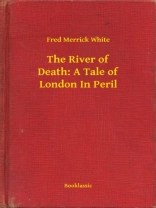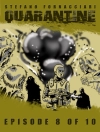Another in the ‘Doom of London’ series, in which the author sounds a clarion call of potential disasters that may fall upon the great city. Here he relates a tale of environmental contamination leading to a medical panic.
London in a year of severe drought; water level in the Thames river extremely low, blazing heat wave for 3 weeks in August; a Portuguese cargo ship sinks and contaminates a tributary of the Thames; 3 of the crew members are discovered to be dying of some disease; the local doctor is frightened by what he sees, calls the health authorities, who call for help from Professor Darbyshire, a scientist who deals with ‘fighting diseases in the bulk’, someone we might call an environmental epidemiologist today; he investigates, then … Darbyshire makes a hurried call asking his friend, Dr. Longdale, to come at once to his house where he has a small laboratory.
‘Darbyshire produced a phial of cloudy fluid, some of which he proceeded to lay on the glass of a powerful microscope. Longdale fairly staggered back from the eyepiece. ‘Bubonic! The water reeks with the bacillus! I haven’t seen it so strongly marked since we were in New Orleans together. Darbyshire, you don’t mean to say that this sample came from—’
Yes, the sample was water from the contaminated Thames, the river from which roughly 4/5 of the water comes to supply the needs of the 5 million Londoners. Longdale says the water system must be shut off.
‘And deprive four-fifths of London with water altogether!’ Darbyshire said grimly. ‘And London grilling like a furnace? No flushing of sewers, no watering of roads, not even a drop to drink. In two days London would be a reeking, seething hell — try and picture it, Longdale.’
‘I have, often, ‘ Longdale said gloomily. ‘Sooner or later it had to come. Now is your chance, Darbyshire — that process of sterilisation of yours.’
Will he save London? Of course — he’s the hero of the story. But how? Does London panic? How do the authorities respond?












